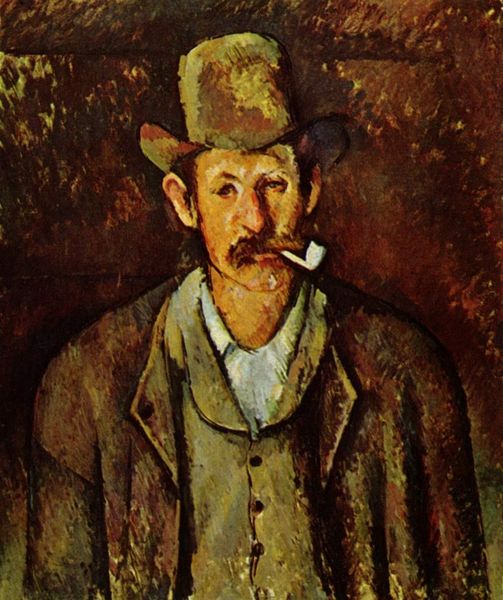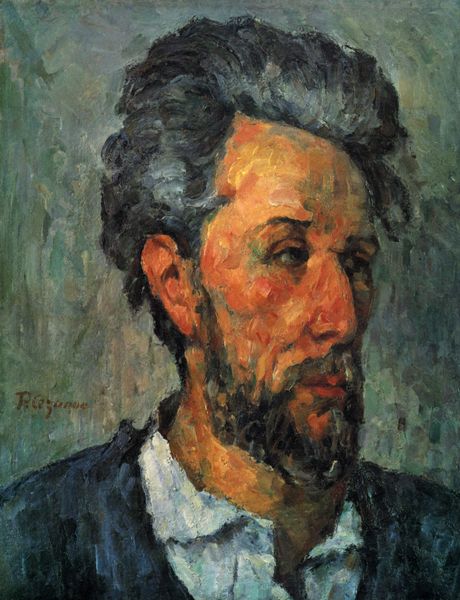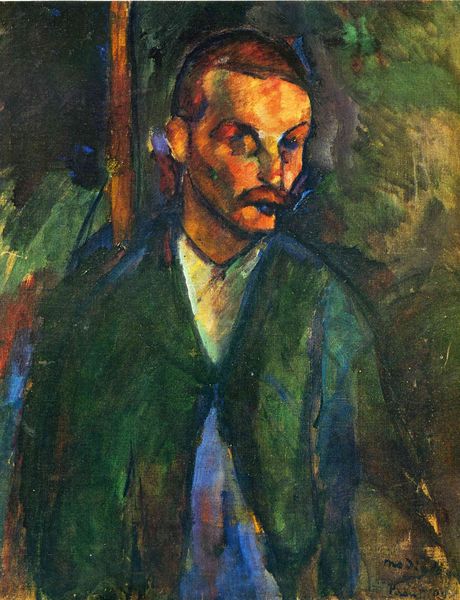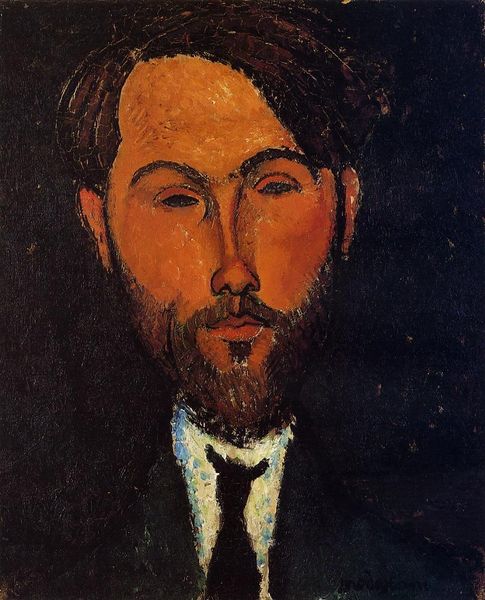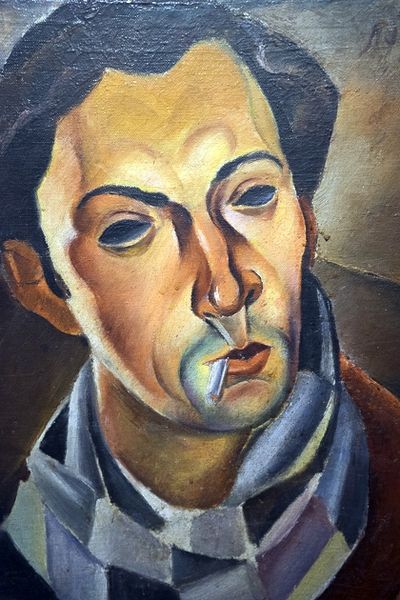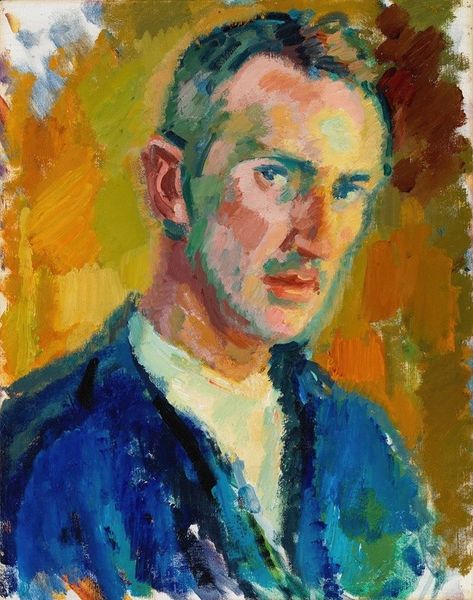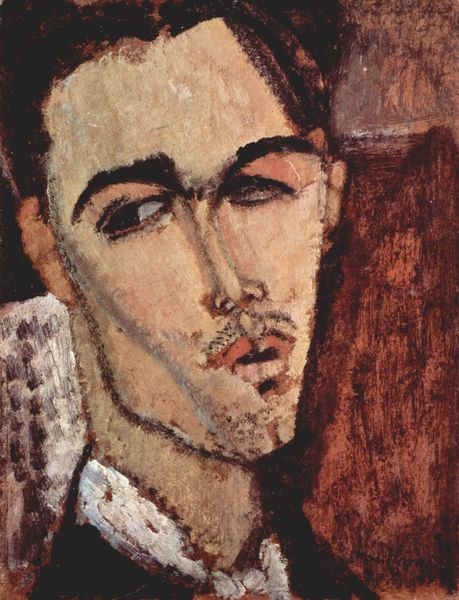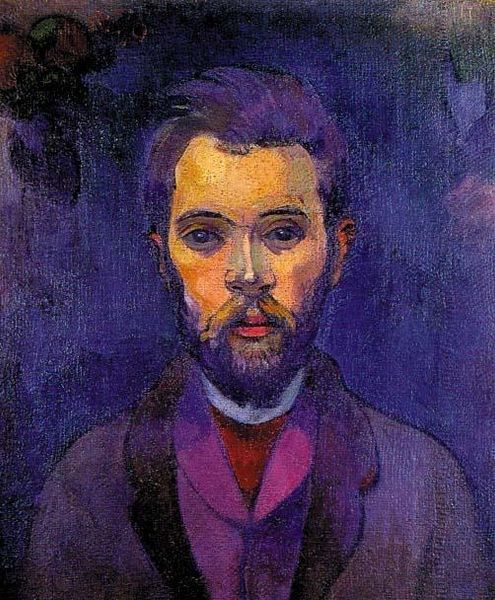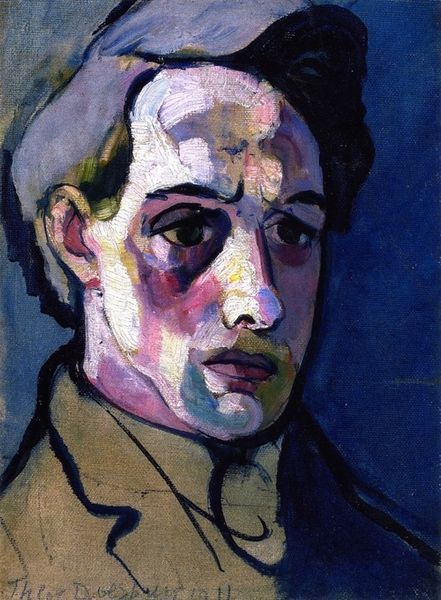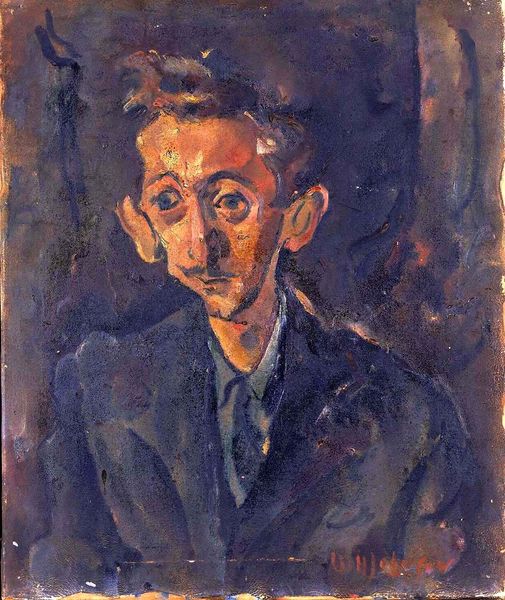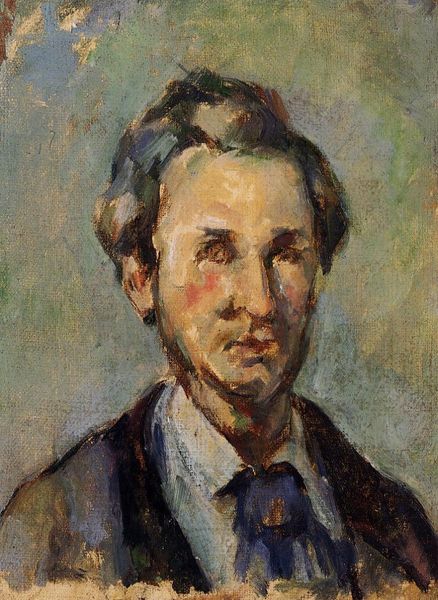
painting, oil-paint
#
portrait
#
self-portrait
#
painting
#
oil-paint
#
oil painting
#
expressionism
#
portrait art
#
modernism
Copyright: William H. Johnson,Fair Use
Editor: This is William H. Johnson’s *Self-Portrait*, created in 1929 using oil paint. I'm really struck by how the bold colors almost seem to be fighting with each other, creating a feeling of tension. What's your take on this piece? Curator: Johnson's *Self-Portrait* is fascinating when considered within the context of the Harlem Renaissance and the evolving image of the Black artist in the early 20th century. The Expressionistic style he employs – that heightened, somewhat distorted use of color and form – reflects the internal turmoil and search for identity common among Black intellectuals and artists of the time. What do you think Johnson is trying to communicate through this particular visual language? Editor: Maybe a struggle for recognition or perhaps even an inner conflict? I’m seeing a face but the expression isn't entirely clear or easy to read. Curator: Exactly. He's consciously crafting an image that engages with, yet also challenges, existing portrait conventions. Portraits historically served to reinforce power and status. Johnson's expressionistic approach can be read as a way to disrupt those power dynamics. Editor: That makes a lot of sense. Thinking about the social context really changes how I see the painting. It’s less about just him and more about his position as a Black artist in a specific time. Curator: Indeed. It also compels us to examine the institutions of art that often marginalized artists of color and the political ramifications of asserting one’s identity and creative vision in such a climate. Editor: I see how it's not just an individual portrait, but almost a statement about representation itself. Thanks for clarifying that!
Comments
No comments
Be the first to comment and join the conversation on the ultimate creative platform.
